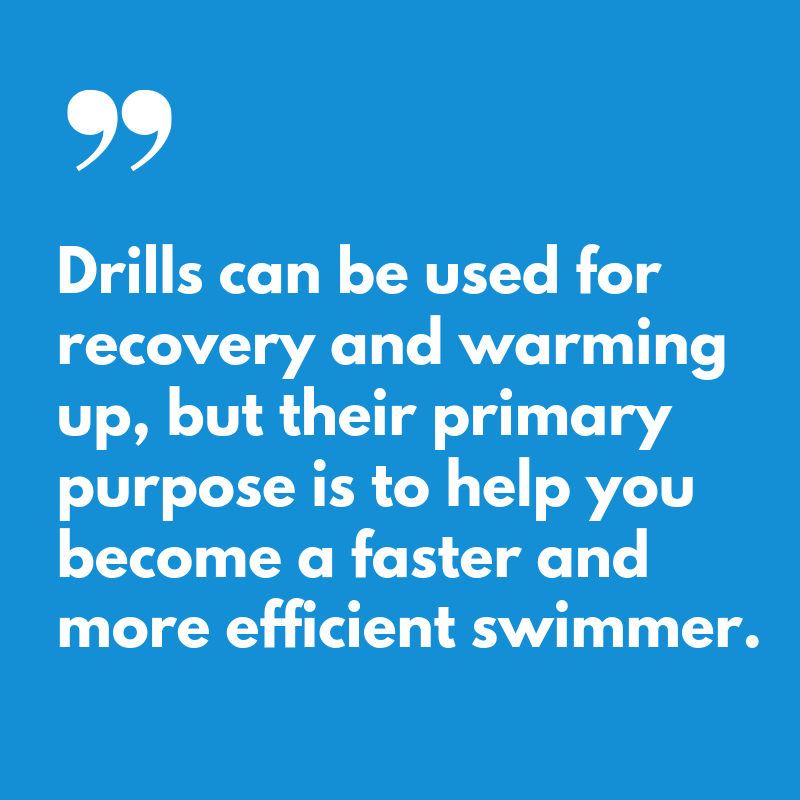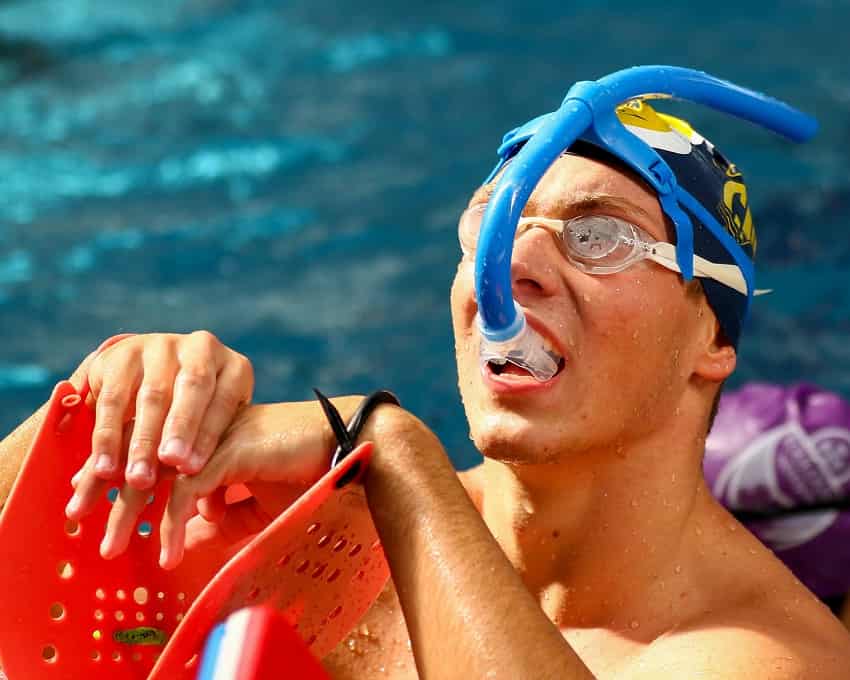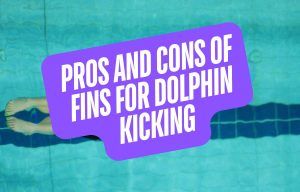Feeling bored or stuck with your swim drills? Here are three ways to supercharge your drills, and by extension, your swimming.
In the never-ending quest to become a better and faster swimmer, we hurl a massive amount effort and focus at our performance.
We work on improving our strength in the weight room. Our conditioning by targeting different energy zones. And use a variety of gear, from paddles to video review to swim more efficiently.
A familiar part of training to most swimmers is drill work.
We start with them at a young age. Dog paddle. Head-up freestyle. Single arm. Full catch-up. One stroke, three kicks. And so on.
The goals with drills are typically to achieve a specific technical improvement and stimulate your brain to master desired motor patterns. A higher elbow. A more streamlined push-off. A tighter hip roll.
But how focused is your drill work, really?
A lot of us—present company included—are guilty of swimming through drill work from time to time, using it as an opportunity to let the mind wander.
Which is too bad—drills present a sport-specific way to improve in the water.
Here are three of my favorite tips for taking your drill work—and by extension, your swimming—to the next level.
Pair drill with regular swimming to carry over the technical improvements you are trying to achieve.
The goal of drill work is to improve your swimming. Becoming awesome at a drill or drills is kinda useless if it is not translating into improvement in your regular swimming.
What better way to increase the connection between what you are emphasizing in drill work with how you want to swim than by mixing drill and swim work?
There are a lot of reasons I enjoy long course swimming, and being able to seamlessly mix drills and swimming is right at the top of the list. Instead of alternating drill and swim in a short course pool, where flip turns and breakouts are causing you to reset, use the big pool to mix drill and swim within a single length.
You can do this in a short course pool, obviously, but with the long course pool set-up you get more time to feel out the changes in your regular swimming stroke.
Do the drill for the first half of the length, and then charge into regular swimming, ideally carrying over the technical changes you are after.
How this looks within a set:
- 8×50 free as 25 closed fist, 25 swim build
Do “fast” drill.
Drill is commonly used as part of a warm-up. A way to increase feel for the water and dial up technical efficiency before the fast and hard work to come later in the main set.
But drills can and should be used at speed.
Ultimately, your goal is to become a faster swimmer, and doing fast drills gives you another opportunity to pile up “fast” reps in the water. Fast drill means you are more closely emulating the body position and “feel” that you want when swimming fast.
The options with how to implement this is limited only by your imagination.

You can isolate specific parts of the drill you want to do fast. For example, if your left arm pull needs some work, try doing dog paddle where where you only pull fast with the left arm, while pulling at a regular speed on the right side.
You can also do the full drill fast. Head-up and closed fist freestyle are two of my favorite drills to do fast in short bursts.
Here is how this could look:
- 8×50 closed fist as 25 cruise, 25 fast
- 8×50 closed fist, every 4th pull explosive
Use different kinds of swim gear to increase skill.
Another way to dial up the connections between drill and swim and increase stimulation is to incorporate gear into your drill work. It’s no secret that swimmers love their swim equipment, so throw your training fins, paddles, DragSox, weight belt and/or favorite swimmer’s snorkel into your drills.
Adding resistance (Stretch cord, DragSox, weight belt) teaches you to really focus on body position and “feel out” the drill. Adding speed toys (fins, paddles) teaches your body and stroke to move through the water with increased velocity.
Here are some examples of how you could add gear to your drill work:
- 8×50 free with FINS and PADDLES as 25 dog paddle, 25 swim build
- 8×50 free with paddle on right hand, fin on left hand as 25 single arm (focus on non-dominant arm), 25 fast. (This is also known as Zona Drill–here’s a breakdown from Jake Shellenberger of Liberty University on why this drill is great.)
- 8×50 free with DragSox, 25 closed fist, 25 swim
The Next Step
The next time you head down to the pool, mix things up with your drill work.
While doing them at a relaxed pace can be useful as part of your warm-up or recovery work, blend drills with your regular swimming, add some speed, and strap on some gear to spice things up.
Image credit: J.C. Mouton
More Stuff Like This:
How to Improve Your Feel for the Water. When you improve your feel for the water you become a more efficient, and ultimately, faster swimmer. Here is how to do it.
Super Slow Swimming: How to Improve Your Technique and Feel for the Water. Swimming slowly and deliberately can make you a faster, more efficient swimmer.














